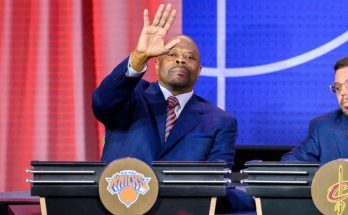The Cincinnati Bengals entered the 2025 NFL offseason with significant optimism and high expectations. Joe Burrow, the franchise quarterback who had quickly become the centerpiece of the team, was entering what many analysts consider the prime of his career. Burrow’s precision, leadership, and poise had transformed the Bengals from perennial underachievers into legitimate contenders in the AFC. Yet, amid this optimism, one looming issue threatened to cast a shadow over the team’s trajectory: the unresolved contract situation with defensive end Trey Hendrickson. What might seem like an isolated negotiation could, in fact, have wide-ranging consequences for the Bengals’ ability to fully capitalize on Burrow’s peak years.
Hendrickson, who joined the Bengals in 2022, quickly became a key contributor on the defensive line. Known for his relentless pass-rushing ability and knack for creating disruption, Hendrickson’s presence provided a crucial counterbalance to a defense that had often struggled in previous seasons. Over the past three seasons, he consistently posted double-digit sacks and became a reliable force against opposing quarterbacks. The Bengals’ management understood the value he brought, not just in statistics, but in setting a tone for the defensive unit and relieving pressure on other parts of the defense. The question became not whether Hendrickson deserved a new contract, but whether the Bengals were prepared to meet his expectations in an increasingly competitive salary environment.
The standoff between Hendrickson and the Bengals front office has generated considerable attention among fans and analysts alike. On one side, Hendrickson’s representatives have emphasized his impact and market value, pointing to other elite edge rushers who have commanded substantial contracts. On the other side, the Bengals appear to be weighing the implications of committing large sums of cap space to one player, considering the broader construction of the roster and long-term financial flexibility. The debate highlights the delicate balance NFL teams must maintain between rewarding proven talent and preserving resources for future acquisitions.
What makes this contract situation particularly significant is its timing relative to Joe Burrow’s career arc. Quarterbacks typically have a window of three to five peak years, and Burrow, who has already endured injuries and challenges early in his tenure, is entering the period when his performance, health, and leadership could yield the most impact. The Bengals’ ability to support him with a strong roster, including both offensive weapons and defensive playmakers, is critical. If Hendrickson were to hold out or become a source of distraction, it could disrupt defensive cohesion, reduce overall team performance, and place additional pressure on Burrow to carry the team. Even subtle impacts, such as a slower start to the season or a fractured locker room, could erode momentum during what should be Burrow’s most productive years.
Beyond the immediate on-field implications, the standoff also raises questions about organizational strategy and culture. The Bengals have built a reputation in recent years for aggressive talent acquisition, particularly in the draft and free agency. Retaining core contributors like Hendrickson aligns with a philosophy of continuity and stability, which has been shown to be valuable in sustaining playoff-level performance. Conversely, protracted contract disputes can signal instability or misalignment between management and players, potentially affecting future negotiations with free agents. In a league where perception can influence player decisions, how the Bengals handle this situation may resonate far beyond the confines of a single contract.
The financial considerations involved are also complex. Hendrickson’s potential contract would likely occupy a significant portion of the team’s salary cap, which could limit flexibility in other areas. Decisions regarding offensive line depth, receiving talent, and even secondary additions are interconnected with how resources are allocated. The Bengals must weigh the cost of meeting Hendrickson’s demands against the broader goal of constructing a balanced team that maximizes Burrow’s prime. Missteps in this calculus could lead to compromises in other key positions, creating vulnerabilities that opponents can exploit in a highly competitive AFC North.
In addition to the internal team dynamics, the public and media scrutiny surrounding the standoff adds an extra layer of pressure. Every negotiation headline, every reported offer, and every rumored disagreement can be amplified, feeding speculation and fan anxiety. This environment places the Bengals in a delicate position: they must demonstrate commitment to their players while also maintaining a disciplined approach to roster management. A poorly handled negotiation, or the perception of one, could influence team morale and create distractions during critical preparation periods, including training camp and the early regular season games.
Historically, the Bengals have experienced the consequences of mismanaged roster and contract situations. Past seasons have demonstrated that even minor instability among key players can ripple through performance, chemistry, and ultimately, results on the field. Burrow, despite his talent, cannot operate in isolation; football is inherently a team sport, and his ability to succeed depends on both the offensive line’s protection and a defense capable of forcing turnovers and keeping games within reach. Hendrickson’s role, therefore, extends beyond individual statistics: he is part of a strategic ecosystem designed to enhance Burrow’s ability to lead the team to postseason success.
From a broader league perspective, the Bengals’ situation is not unique, but it underscores the high stakes of contract negotiations in modern NFL dynamics. The market for elite edge rushers has become increasingly competitive, and player mobility is higher than ever. Teams must balance short-term ambitions with long-term planning, often navigating a complex interplay of cap management, player expectations, and competitive pressures. For a team like Cincinnati, which is striving to convert recent playoff appearances into sustained success, miscalculating the timing or scope of a contract deal could have significant ramifications.
For fans, the narrative is clear: the prime of Joe Burrow’s career is a window of opportunity, and every decision made by the front office carries outsized importance. Hendrickson’s contract situation serves as a microcosm of the larger challenges facing the organization. It is not merely about one player’s salary; it is about the ability to maintain momentum, preserve team chemistry, and optimize the roster to support the quarterback during what could be the most productive and influential years of his career. The tension between rewarding individual talent and protecting the team’s broader objectives reflects the inherent complexity of managing a professional football franchise in the modern era.
As the 2025 season approaches, the urgency of resolving Hendrickson’s contract becomes even more pronounced. Training camp, preseason games, and early-season performance will set the tone for the year, and any lingering uncertainty can become a destabilizing factor. Ideally, the Bengals will find a resolution that satisfies both the player and the organization, enabling Hendrickson to contribute fully while allowing the team to preserve strategic flexibility. Failure to do so could leave the franchise exposed, squandering precious time in Burrow’s peak and potentially diminishing the team’s window of championship contention.
In conclusion, the Cincinnati Bengals’ contract standoff with Trey Hendrickson is far more than a routine negotiation. It represents a pivotal moment in the organization’s pursuit of sustained success and its ability to maximize Joe Burrow’s prime. The implications extend beyond one player or one season, touching on team chemistry, salary cap strategy, public perception, and the overall trajectory of a franchise poised for contention. How the Bengals navigate this complex situation will likely shape not only the immediate success of the team but also Burrow’s legacy and the broader perception of the organization as a competitive force in the NFL. With stakes this high, resolution is imperative, and every decision carries consequences that could resonate for years to come.



